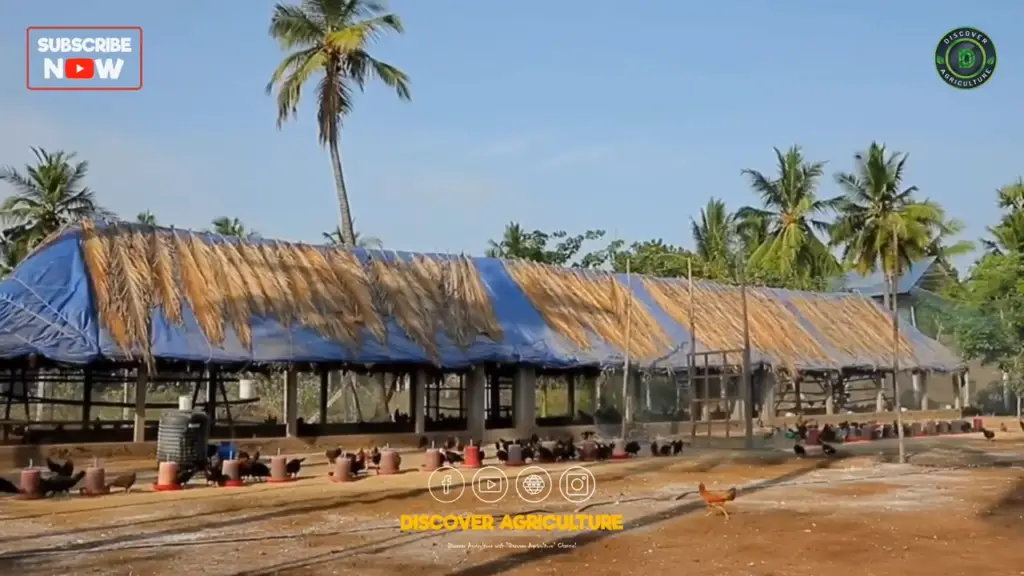Integrated Farming System
An integrated farming system is a combination of various agricultural and allied activities in a unit area of land. Ifs activity is focused on a few selected interdependent farm enterprises, namely crop, livestock, aquaculture, horticulture, agroforestry, etc. These enterprises not only enhance the income of the farmer by increasing productivity, but they also create employment opportunities. Integrated farming with livestock, poultry, and fish is gaining momentum throughout the world, especially in countries like China, Hungary, Germany, and Malaysia due to the effective recycling of waste.
Fish and Livestock Integrated Farming Systems
Some of the proven livestock fish integrated farming systems are Dairy comb fish culture, pig cum fish culture, goat cum fish culture, duck cum fish culture, and poultry comb fish culture. In the case of irrigated conditions with adequate water facilities, the integration of dairy Combbe fish culture, along with other allied enterprises like Piggery, duckery, poultry, and crop production, namely patty or sugarcane, along with vegetable cultivation, is the ideal proposition. A unit of four to 5 cows or buffaloes is enough to provide adequate manure for the fish pond of one acre.
A single healthy cow produces 4000 to 5000 kilograms of dung and 3000 to 4000 liters of urine annually. The green fodder for cattle like Napier hybrid and grasses can be cultivated near the fish pond. Small duck sheds or cages for housing 15 to 20 ducks may be erected on the farm banks for effective utilization of droppings by the fish. The ducks shall be fed with poultry feed and rice bran at the rate of 100 grams of feed per bird per day.
Further, the grazing of ducks in fish ponds improves the percentage of organic carbon, phosphorus, and potassium level, which improves the productivity of fish in addition. Supplemental income from the sale of duck eggs is derived. About 100 to 200 layer birds like white Leghorn or native chickens like a seal, Nicobari, and Silvedi can be reared in sheds of 20ft by 20ft, which will produce litter material adequate enough for vermicompost production or fertilizer 30 percent of the pond. The egg layers lay 250 to 300 eggs per year, whereas the desi chicken lay 80 to 100 eggs in a year. By effectively utilizing the droppings of birds, 10,000 eggs and 4000 kg of poultry meat can be produced in a year.

Integrated Vermicompost Farming
Vermicompost beds of size 10 feet by 3ft by 2 feet and biogas units of the 2-meter cube may be established in the year-marked area. And the dung obtained from cattle, pigs, and poultry shall be utilized for the production of vermicompost in biogas. A piggery shed shall be erected for housing 10 to 20 fattening piglets, near the fish pond and reared for six month period. That is till the marketing age of eight months in two batches and the dung may be channeled into the ponds. In the case of the Pig Koom fish culture, the pig dung acts as an excellent fertilizer for fish ponds, and the fish feed the dung directly, each fully grown pig voids 500 to 600 kilograms of dung in a year. Further, vegetables, namely brinjal, ladyfinger, tomato, chilies, and moringa may be cultivated in 20 cents of land for harvesting vegetables for own consumption.
Mushroom Farm and Honey Farm
The paddy straw obtained after paddy harvest shall be utilized as a dry folder for feeding dairy cattle and also as a base material for the production of mushroom bags, oysters, or milk mushroom production. To facilitate cross-pollination in plants and for deriving supplemental income apiary unit containing 4 to 5 honey bee boxes may be installed in the year-marked land for harvesting 7 to 8 kgs of honey per year as supplemental income. To generate more income, ornamental fish units in cement tanks may also be established for rearing ornamental fishes like guppies, Mollies, goldfish, Oscar, and Angelfish and marketed locally. The initial capital of three to five locks is needed for establishing 2.5 acres of integrated livestock farming. Depending upon the enterprise is integrated with the year-marked area. The estimated expenditure for crops, vegetables, border cultivations, dairy, piggery, poultry, and fish culture may be attuned to 2 to 3 locks per hectare per year. About 6000 kilograms of milk can be obtained from 5 to 6 cows and buffaloes per year and the farm fresh milk can be sold directly to households at rupees 40 per liter. Thus generating revenue of a minimum of two locks.
Fish Farm and Livestock together
Around 2000 kg of freshwater fish, namely Rohu, Kotla, and Grass carp, can be harvested and sold at rupees 100 per kilogram of fish fetching income of one to two lock rupees. In the case of dry land conditions, sheep and goat farming, along with other income-generating enterprises, is the pragmatic solution. Agroforestry, along with backyard poultry, Turkey, quail, rabbit, and homestead vegetable gardens. May be established in addition to sheep or goats and freshwater fish production.
Further, Vermicompost and Azolla may also be established for supplemental income generation. About 30 to 40 sheep and goats shall be housed in sheds under a semi-tensive system. An adult goat discharges 100 to 140 kilograms of excreta per month, and the same may be utilized for manuring one acre of a fish pond or for the production of Vermicompost. About one to two tons of fish per acre per year may be harvested from the fish ponds. A standard income of one lock rupees may be obtained by the sale of farm fresh eggs every year. Likewise, a minimum of 900,000 to one lock may be obtained by the sale of 15 fat pigs at eight months of age.

Integrated Vegetable Farming
In the case of crop and vegetable cultivation, a sum of one lock rupees may be obtained from crop and vegetable harvest per year. Thus, a total revenue of 6 to 7 lock rupees may be generated per year from 2.5-acre land and typical livestock farming under irrigated conditions. An agri- forestry model shall be established on one acre of land. The year-marked land may be planted with fruit trees like guava, sapota, and pomegranate with a spacing of 10 by 10 meters on the boundaries and year-marked areas under drip irrigation.
Fodder plants, namely Agati, Super Bowl, and Mulberry may be established with a spacing of 2x 2mers in 2 rows. Thus, a total of six to eight tons of green fodder per tree leaf may be harvested and fed to sheep and goats from the year-marked area. A total of 500 Dezi chickens shall be reared in sheds of 50 feet by 20 feet, along with a free range area of 20 cents for the adequate feeding of insects and worms. Each desi chicken in the backyard produces approximately 20 to 30 grams of droppings per day, which can be utilized for vermicompost production.
Integrated Desi Chicken Farming
Each desi chicken lay 80 to 100 eggs in a year, which fetches good returns in the local market. A small unit of 10 to 20 turkeys or 200 to 300 quails may be reared in cages or sheds. The turkeys attain 3 to 4 kg at the marketing age of 5 to 6 months and can be sold during festive seasons. The Japanese quail shall be reared in cages and may be marketed at 35 days of age when they attain a weight of 200 grams. Further, 10 to 12 rabbits may be raised under cages and may be marketed at 3 to 4 months of age for meat purposes.
To generate more income, vermicompost units, appear units, and ornamental pet bird units may be established within the same land area. With regard to the revenue, 30 young sheep or goats weighing 500 to 600 kilograms will be ready for marketing every year. And each goat will be sold at the rate of rupees 200 to 250 per kilogram of live weight, thus generating revenue of 1 to 1.2 locks. Around 1500 to 2 kilograms of freshwater fish, namely Rohu, Kotla can be harvested in 1 acre per year and sold for rupees hundred per kilogram of fish, thus generating an income of rupees one locked by rearing 500 desi chickens, 30 to 40,000 eggs, and 600 kilograms of poultry meat can be produced every year and sold in the local market.
The revenue from backyard poultry will be two to 3 locks per annum. Further, the revenue of 50,000 to 60,000 may be obtained from the sale of Turkeys and Japanese quails. The rabbit unit will also generate revenue of 60,000 to 70,000 rupees per year. In the case of the horticultural unit of Horti Silver pasture enterprise, a sum of rupees, one lock may be generated by harvesting and sale of fruits like Guava, Cipota, and pomegranate per year from the second year onwards.
Conclusion
Thus, total revenue of five to six locks may be obtained per year from 2.5 acres of land and dry land integrated farming. Integrated livestock farming is a promising approach for enhancing overall productivity and profitability by way of efficient utilization of available resources and recycling of farm by-products. It helps in augmenting farm income and employment generation throughout the year. Thereby promoting sustainability and improving the standard of living of resource-poor farmers.
Also View: Integrated Fish And Layer Chicken Farming | Integrated Poultry and Fish Farming
Integrated Fish, Chicken, Quail, and Vermicompost Farm | Best AGRICULTURE Business

